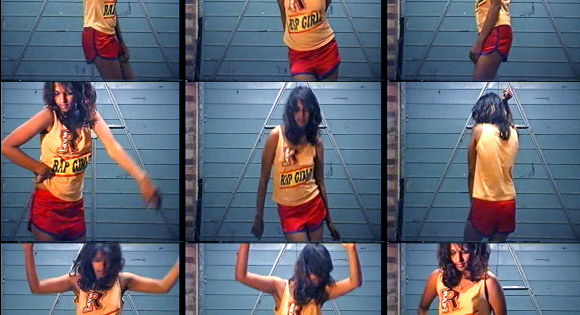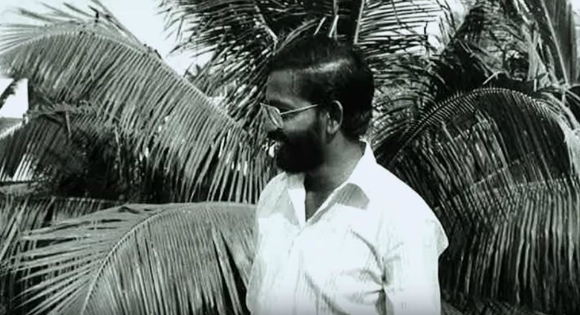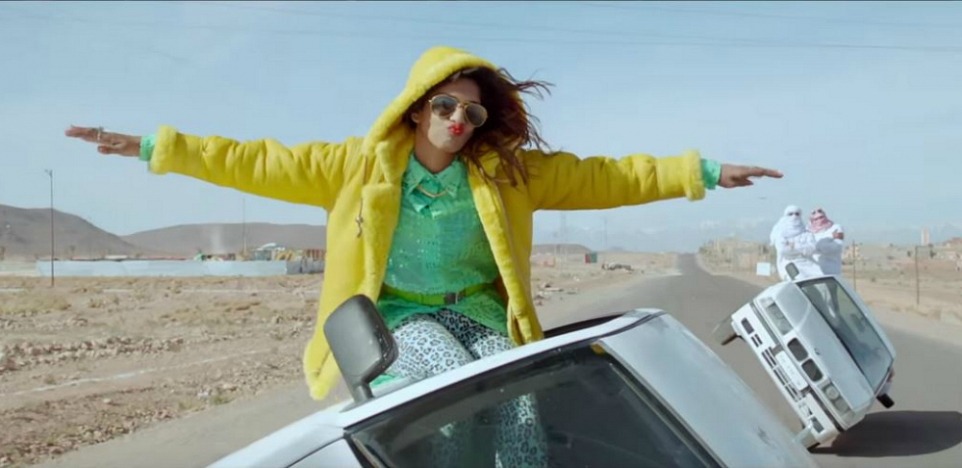Over the opening credits of Steve Loveridge’s loving and disjointed documentary, British Sri Lankan rapper M.I.A.’s voice floats in, singing a simple three-word statement that sums up the entirety of this intimate, chaotic portrait of an artist in flight: “Gravity’s my enemy.”

Throughout the rest of the film, this thesis will be proven countless times, as Loveridge’s narrative traces the artist’s picaresque mashup of shifting identities. We journey with her from her childhood as Matangi in Sri Lanka, to her youth as Maya in the United Kingdom, to her maturation as M.I.A. on the global music and activism stages. Drawing on footage from 22 years’ worth of friendship, Loveridge captures a restless innovator who knows exactly who she’s been, who she is, and who she wants to be, even if the world can’t always get onboard for the ride.
Loveridge’s close relationship with M.I.A., whom he knew as Matangi “Maya” Arulpragasam when they attended art school together at London’s Central St. Martins in the late 1990s, colors every intimate frame of his profile. He asks deeply personal questions like, “Why are you a problematic pop star?” Such a query might get a rise out of someone less familiar with him, but Loveridge gets his prickly subject to playfully participate, adding loose narrative and commentary to his spelunking trip through over twenty years of archival material. The result can feel messy at times, but what the film lacks in grounded coherence it makes up for in raw, authentic verve, much like M.I.A.’s own impulsive art. An anarchic spirit runs throughout, but it always feels more nervy than nihilistic, more spirited than simply snarky.

Those unfamiliar with M.I.A.’s controversial creativity and activism might find themselves lost in some of the film’s less cohesive moments, but Loveridge gives just enough clues along the way to showcase the major points of her often riotous career. He covers both the truly transgressive and the tinily trivial, most notably her outspoken opposition to the oppression of the Tamil people in her native Sri Lanka (she is the daughter of the founder of the armed Tamil resistance), and her heavily condemned appearance in the halftime show at the 2012 Super Bowl, during which she flipped a middle finger to the camera, setting off a firestorm of cries for public punishment. Less insight and information are given about M.I.A.’s creative process and output, but Loveridge’s aim for his film is clear: Both he and his subject are interested in letting the art speak for itself while daring the audience to draw their own conclusions regarding the reasons behind the artist’s inspired rhymes and inspiring radicality.

Even with access to home videos and personal interactions, to the viewer M.I.A.’s creative magic may remain mostly a mystery, as mercurial and disordered as Loveridge’s collage of impressions and impassioned exclamations, but the mystery and muddle all contribute to the magic’s power. No simple apologies are made. No complicated punches are pulled. No easy connections are drawn. M.I.A. has sustained herself on a career riddled with beats that mysteriously move the body while her messages mysteriously move the heart and mind, and Loveridge’s unsentimental study is content to watch her fly while he picks up the pieces and presents them in her unwavering wake.
